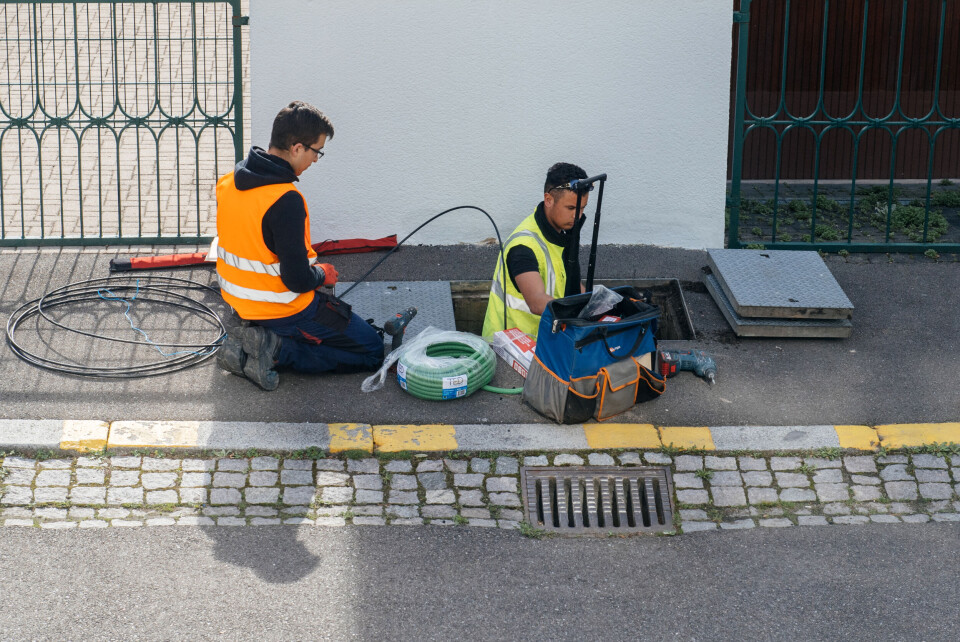-
Two thirds of people polled say they struggle with online French admin
The problem has worsened in the past 10 years as more and more services ‘go digital’, finds study
-
Fibre internet connection grant available in more than 3,000 French communes
See if you are eligible and how to apply for a grant of up to €1,200
-
SFR sale may affect millions in France
Telecoms provider has lost nearly one million customers since summer 2023
Fibre broadband is still lacking in much of France: where and why?
We also look at what is being done about the problems and a change of approach in Brittany

Slow, inconstant connections, messy work, late technicians… Despite these common frustrations, the number of homes connected to fibre broadband is rising. But not all areas have access yet.
Between March and June 2023, 870,000 more homes were connected to the fibre broadband network which meant that by July 2023, 74% of France had access.
Large areas of north eastern France have it, but in the south, centre and north west, the connections are significantly more patchy.
Which areas are lagging behind?
Brittany is the region with the least fibre connectivity with all four departments in the region far behind the national average. In Côtes-d'Armor only 47% of homes are eligible for fibre connections, 50% in Finistère, 54% in Morbihan and 66% in Ille-et-Vilaine.
Other poorly performing departments are Vienne, Dordogne, Ardèche, Drôme, Somme and Savoie.
In some cases, such as in Ardèche or Savoie the slow spread of fibre connectivity can be understood by the difficult local terrain.
However, in Dordogne or the Brittany departments the reasons are more complex, intertwined with the French government’s strategy elaborated in the 2013 Plan France Très Haut Débit.
As is often the case in France, the rollout of fibre broadband relies on a jigsaw of the state, the regions, the private sector and a watchdog (ARCEP).
Much of the €6.5billion funding for the system ultimately comes from the state and the regions, with private operators supplying the manpower and connecting homes, and the watchdog mapping progress and keeping the peace.
Regions set up their own syndicates to manage the rollout, such as Périgord Numérique and Mégalis Bretagne.
By 2017 the major cities had largely been connected.
However, in December of that year President Macron froze state funding from the state until 2019, then limited the funding pot to €140m, a low amount given that Brittany alone still required €200m to complete its fibre rollout.
More of the impetus for the rollout fell upon the regions at this time. The greater freedom and greater share of the costs led to a great disparity in the rate of progress between regions.
In Brittany, the local authority responsible for the fibre rollout Mégalis Bretagne admitted that its choices caused delays.
“It is in part due to the choices we made between 2016 and 2020 to use local companies to do the work. We got delayed,” its spokesperson said to the Pontivy Journal in May 2023
The French government sought to resolve the issue of patchy financing in its new edition of the Plan France Très Haut Debit published in 2023, which allocates funding until 2025 and beyond. The plan also extends the project beyond its initial finish date of 2025 due to the significant delays in Brittany in particular.
The plan now aims for 100% access to fibre broadband by 2030.
While Brittany lags behind, Mégalis Bretagne believes that lessons have been learned.
“For the next phase of the rollout, we are only going to use a single company, which will get this done much faster.”
‘Too many subcontractors’
Read more: France’s fibre network ‘had seven times more complaints than mobile’
In May, senator Patrick Chaize, who represents Ain (Les Republicains), suggested that the rollout was being mismanaged.
“The problem is the operators are simply not geared for the number of connections – 15,000 a day – and so they subcontract, and their subcontractors also sub-contract,” Mr Chaize told the Connexion.
The contractors and subcontractors, he said, are often poorly paid and under considerable pressure to connect too many homes, too fast, meaning that many people have been left wanting by the quality of their fibre connection.
What sorts of issues are people having?
The Association française des utilisateurs de télécommunications, Afutt, says that ‘service interruptions’ are the main complaint, which can see entire villages cut off from the internet for days at a time.
Many people have concerns about the fragility of the fibre network, which can sometimes cut out when an operator is connecting another home in the neighbourhood.
There can be external factors too with a massive internet blackout recently affecting 27 communes in the Cevennes when rodents gnawed through fibre optic cables near Florac (Gard).
Read more: Internet cut after suspected rodents chew cables in southern France
Other users feel frustrated that they cannot fall back on the old copper ADSL system when the newer fibre optic cables connection fails.
While the copper network still has 22.6m active lines and 15m poles around France, it is due to be dismantled by 2030.
How can you avoid problems?
Make sure you are present when the operator (Orange, SFR, Free, etc) comes to connect your home to the fibre network.
The operator may need to drill holes, or run the new fibre cable along the inside and outside walls. Make your preferences clear to the person doing this as alternative solutions may be available (for example, putting the cable in a corner).
If you are dissatisfied with the service, your first contact should be to your operator’s customer service and if they prove difficult to contact, to a consumer group such as UFC-Que Choisir.
All telecommunications companies in France are regulated by the media ombudsman, which you can contact should customer service prove unsatisfactory.
Related articles:
Map: best and worst areas in France for fibre optic connection
How did your internet provider score in new service ranking in France?
French senator proposes law change to improve fibre optic rollout
























